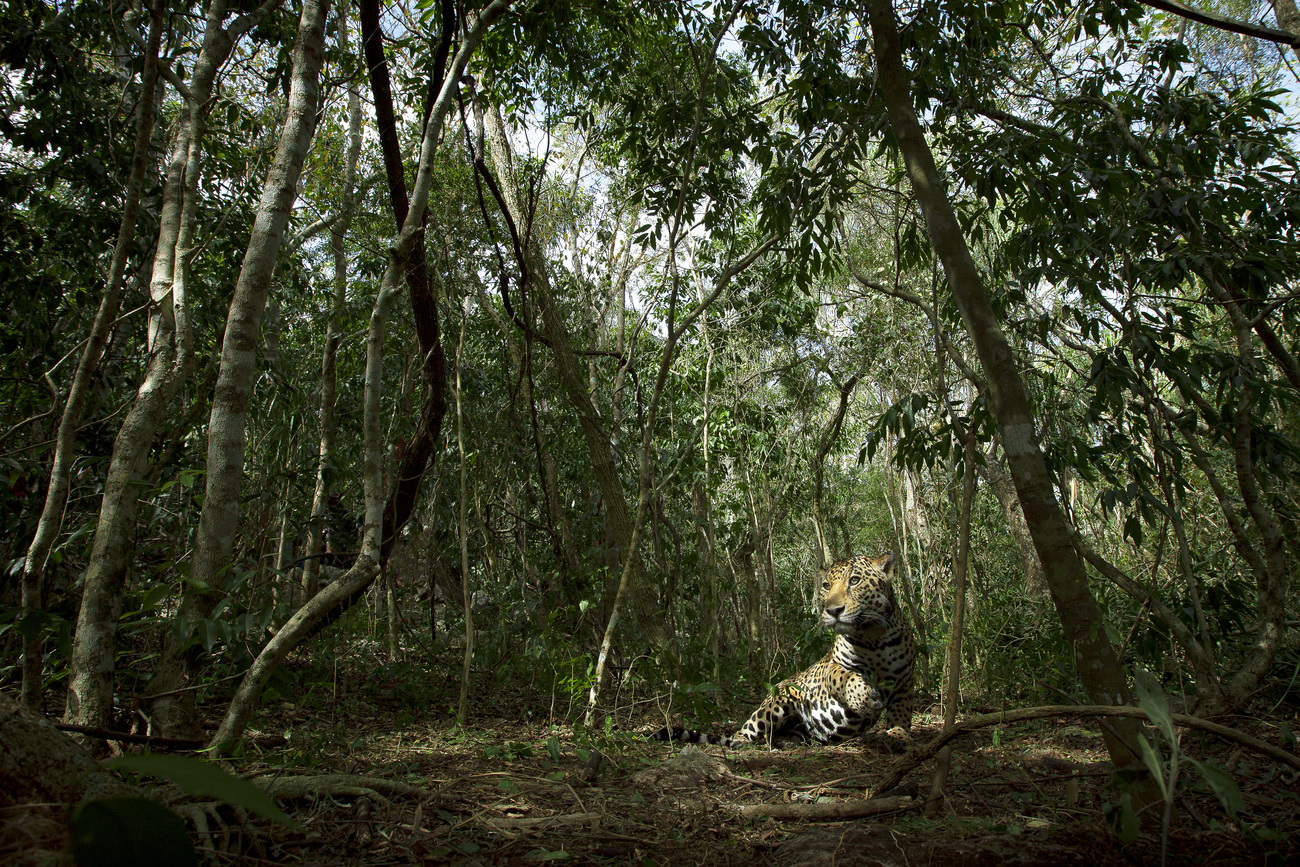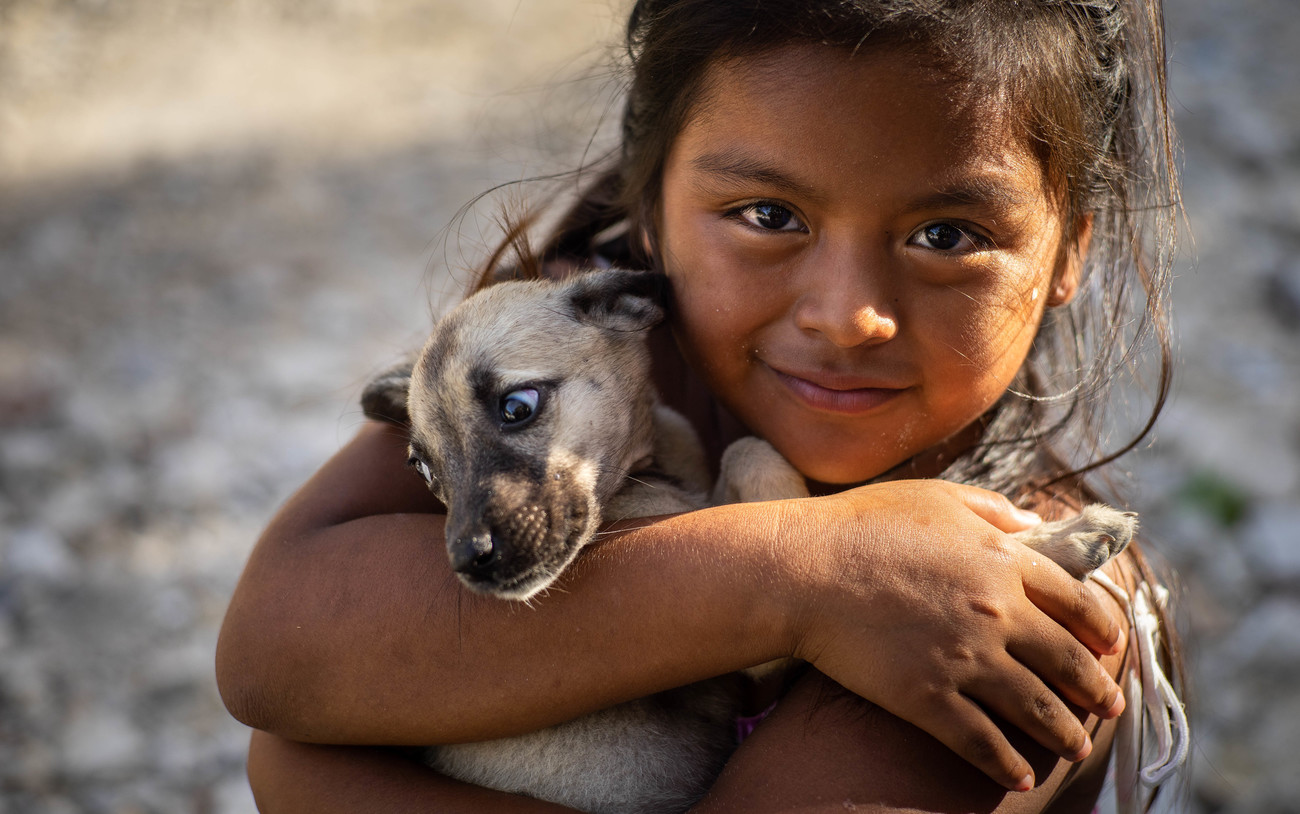Operation Jaguar - South America
To protect jaguars in the Americas, we are helping to fight the growing threat of illegal wildlife tradesaving the jaguar, an icon of biodiversity across the Americas
saving the jaguar, an icon of biodiversity across the Americas

The lion may be referred to as the king of the jungle, but in the Americas, the jaguar rules.
Jaguars used to roam as far north as Arizona and Texas, all the way down through Central America and South America. In the early 1800s, their population reached over 60,000, but hunting and agricultural development throughout the mid-1900s led to mass population declines. Due to the big cat’s elusive nature, it is difficult for researchers to calculate the exact number of jaguars left in the jungles and rainforests of the Americas. The one thing conservationists do know: jaguars are at a tipping point and the actions we take today will determine their chance of survival.
As an apex predator, the jaguar plays a crucial role in maintaining a balanced food web and supporting a fully functioning ecosystem. Without jaguars, lower trophic level species like deer, peccaries, and capybaras would overpopulate, leading to devastating impacts on vegetation and landscapes. If we continue to lose jaguar populations, we could lose hundreds of species in the Americas.
Meet Joaquin de la Torre Ponce, Dr. Erika Flores, and Polen Cisneros, IFAW’s team on the front lines working to protect Latin American and Caribbean biodiversity. Their mission: promote coexistence and advance international legislation to counter wildlife crime and protect key species like the jaguar.
Their story begins back in 2017, when Dr. Erika Flores learned that jaguars were preying on dogs in Invasores, a community on the outskirts of Playa del Carmen, Mexico. Deforestation, mining, and development damaged natural habitat, forcing jaguars to encroach upon local settlements in search of viable land and food. As jaguars roamed closer to communities, community members found themselves facing new human-wildlife conflicts. Jaguars attacked dogs and people killed jaguars in retaliation out of anger and fear. In addition to the killings, jaguars could contract deadly diseases like canine distemper from free roaming dogs who lacked proper vaccinations. If a jaguar killed a sick dog and brought it back to its family of cubs, a population of jaguars could be wiped out in a matter of days.

Promoting coexistence between jaguars and people
To tackle this challenge, Erika and Joaquin created Casitas Azules (little blue houses), an initiative to help local communities and animals coexist alongside native wildlife. As their first step, they hired community members to build blue wooden doghouses. With proper designated shelter and better nutrition and health, neighborhood dogs were now less likely to roam the streets and attract jaguars on the outskirts of town. Next, Erika called upon IFAW’s local partner Coco’s Animal Welfare to help support health services for animals in need. Through sterilization procedures and vaccinations, proper pet guardianship increased, dog populations became stable, and disease plummeted. As momentum grew, the initiative spread to other nearby towns. Today, Erika and the Coco’s Animal Welfare team perform frequent wellness checks in the communities of Invasores and the Mayan community of Nuevo Durango. During these trips, they supply doghouses, rebuild chicken coops to make them predator proof, and offer free veterinary services. Through these available resources, the communities have transformed into a place of coexistence.
Working with local communities to create solutions that promote coexistence is just one layer to the complex challenge of saving the world’s last jaguars. Over the past decade, illegal wildlife trade of jaguar fangs, pelts, and claws has become a booming market across Latin America and Asia. The jaguar is protected under Appendix I of the Convention on International Trade in Endangered Species of Wild Fauna and Flora (CITES), making international trade of live jaguars and jaguar parts illegal—but like all illegal wildlife trade, the market continues to exist through complex networks of poachers and traders.
Creating long-lasting change on the ground
What do you do when the law is on your side, yet people continue to kill protected species? You work to change perspectives and strengthen enforcement of the law. Joaquin and Polen understand the importance of investing directly in communities to implement change. In December, they hosted a wildlife enforcement training session in Guyana, South America, a hot spot for biological diversity. They united police officers, custom agents, airport authorities, park wardens, and defense forces under the common goal of protecting threatened species and enforcing repercussions for illegal wildlife trade. The result: a stronger network of authorities who are now better equipped to support one another. By working directly with high-level government officials in the region, Joaquin is also able to strengthen international policies that provide greater protections for jaguars. Most recently, his work helped bring the inclusion of jaguars in the Appendix I and II of the Convention of the Conservation of Migratory Species. With this monumental achievement, member countries are now committed to assuring that jaguar habitat and migration corridors remain protected.
Securing a future for jaguars is not going to be an easy task. We have to overcome cultural differences, spread awareness at a local level, and often dedicate years to one single effort to pass an individual piece of legislation. Nevertheless, Dr. Erika Flores, Polen Cisneros, and Joaquin de la Torre Ponce have hope for the jaguar and the hundreds of other species impacted by its ecological role in the environment. They believe in a better tomorrow for Latin America and the Caribbean’s rich biological diversity and will keep working until this vision becomes a reality.
Related content
Our work can’t get done without you. Please give what you can to help animals thrive.